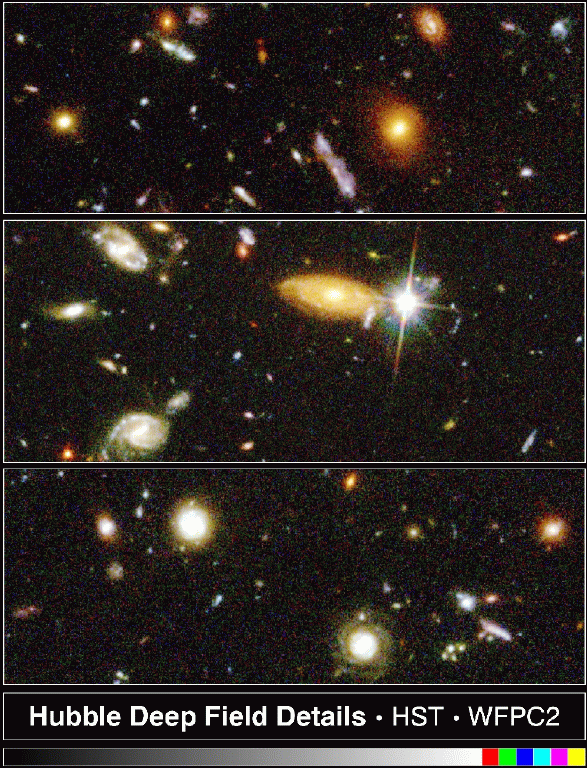
The Hubble Deep Field (HDF), a picture of a tiny patch of sky taken by the Hubble Space Telescope, is the deepest optical image of the universe ever recorded. Actually, it would be more accurate to say that the HDF has captured the faintest galaxies (down to an unprecedented 30th magnitude) rather than the deepest or furthest galaxies because the distances to many of the objects are not yet known. Still, if as expected deepness goes with faintness and if thereby the image serves partly as a snapshot of the universe at a very early time in its history, then it is significant that the density of galaxies in the field is quite high; an estimated 1500 of all types and shapes crowd the frame. This would suggest that telescopically astronomers had not yet glimpsed the epoch of the first galaxies. The observations were carried out over a ten-day period in December 1995 and used four wavelength bands in order to achieve a true color image.


 |
 |